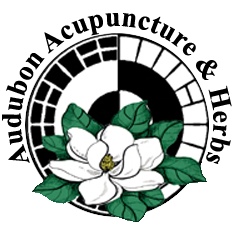These days, a growing number of people who suffer from chronic pain are seeking out a holistic approach to managing their discomfort. There are a lot of holistic pain relief methods without relying on non-steroidal anti-inflammatory, narcotics, tranquilizers, or anti-depressants.
Holistic health focuses on the principle that human potentials unfold to be actualized as total beings functioning at their best. It operates on the human desire for vitality, enthusiasm and fulfilling and satisfying life. Holistic health addresses not only the physical aspect but also aims to establish balance within the self at all levels, the body, mind, and spirit, as well as achieve harmony with the environment. Holistic health is an approach that affects one’s lifestyle, relationships, and social interaction. Holistic health also encompasses the management and elimination of stress.
Some studies, including a small well-conducted trial, have reported relief from pelvic pain after acupuncture or acupressure, a technique that applies small pins or pressure to specific points on the body. It is believed to work by exciting nerve receptors in those locations that interact with pain blockers in the brain. Some women report relief with reflexology, an acupressure technique that uses manual pressure on the body’s vital points located in the ears, hands, and feet.
These Chinese holistic pain relief methods are based in the belief that health is determined by the level of chi (vital life energy) that is inside the body. This energy is thought to move through pathways called meridians, which connect to specific organs in the body. People use different terms when describing systems and methods used in the scope of holistic medicine. The most popular among the terminologies are alternative medicine, complementary medicine, and natural healing, all of which use procedures that are non-invasive.
Another important part of traditional Chinese medicine is herbal medicine. Herbs have been used for centuries for their holistic pain relief qualities. Chinese herbal medicine or CHM has been used for many centuries in China. It has been used in public schools to treat unexplained cramps as a menstrual pain relief.
A study conducted by Cochrane researchers found evidence that CHM may provide a possible treatment for pain relief. Experts believe the pain relief the herbs provide may stem from their influence on hormones and micro-circulation hemorrheology, but they have not found conclusive evidence of their exact pain-relieving mechanism.
Yoga and meditative techniques that promote relaxation may also be helpful for pain relief. Meditation is also another popular choice for a lot of people for a holistic pain relief method. It has also been practiced for thousands of years. It is a conscious attempt to calm the mind so that it is not cluttered with thoughts and anxieties that might be contributing to an unnecessary belief in the existence of pain.
There are hundreds of different meditation techniques, but mostly they all into three categories: concentrative, mindful and transcendental meditation. Aromatherapy, at its best works to heal the body and mind, healing it from various illnesses, as well as working as a stress reliever to prevent illness.
Aromatherapy has been used over the years by Egyptians, Indians, Europeans, Germans, France, etc. The oils have proven to assist in relaxing the body and mind, and were used as a medicinal remedy. Applying essential oils is thought to change an individual’s brain chemistry so that pleasurable neuro-transmitters called endorphins are released to relieve pain. Geranium, jasmine, juniper, lavender, peppermint, rose, rosemary and thyme are oils commonly used for this purpose.
For many people, particularly those in the western world, holistic pain relief solutions such as acupuncture, and herbal medicines are novel concepts. However, the rest of the world is probably wondering what the fuss is about, because these traditional approaches to holistic pain relief have been around for thousands of years and are still widely accepted until today.

Recent Comments